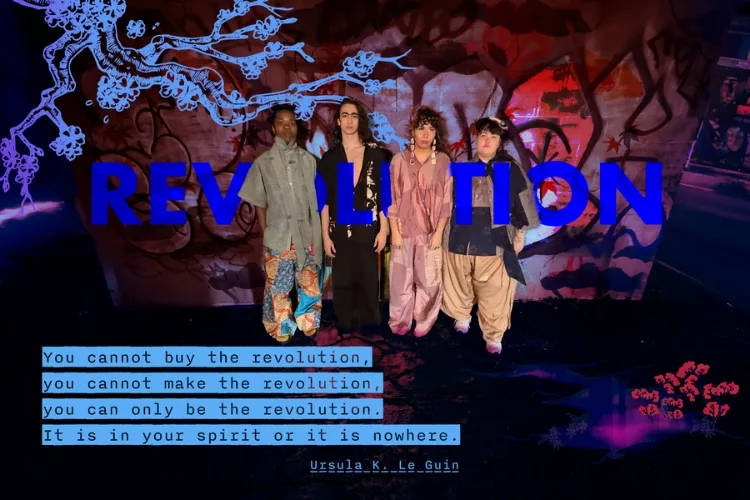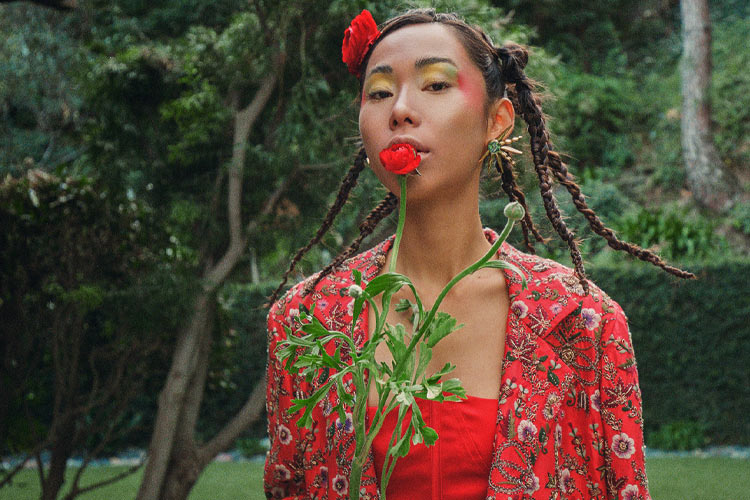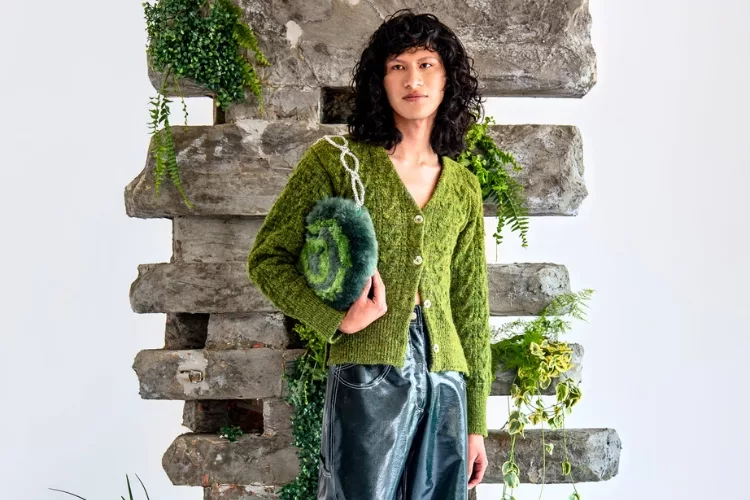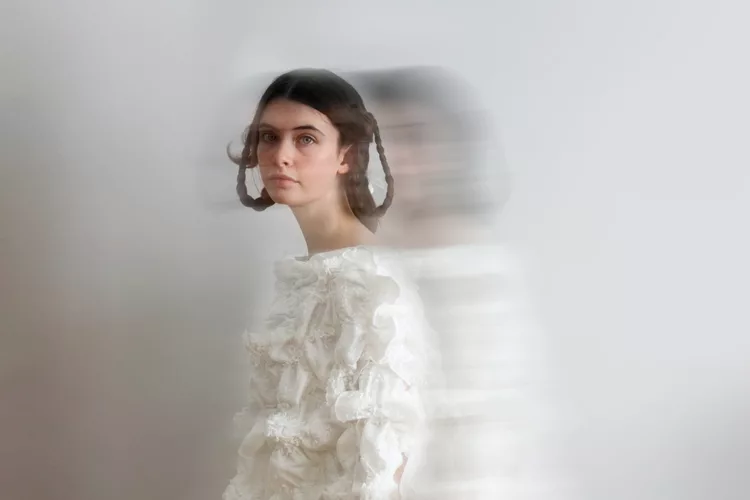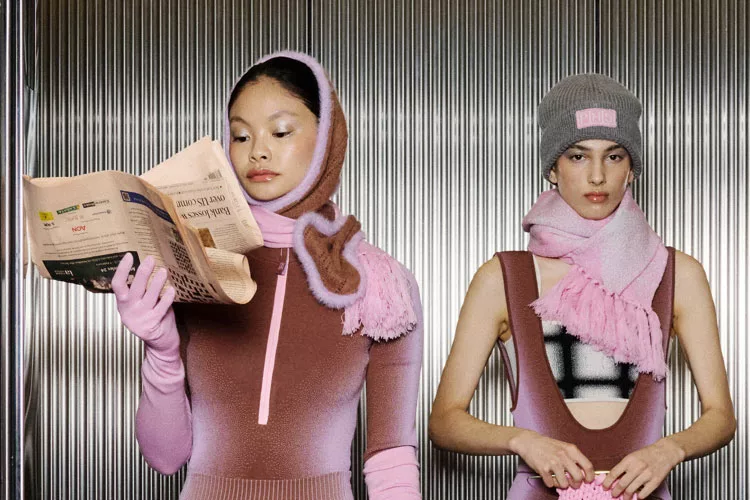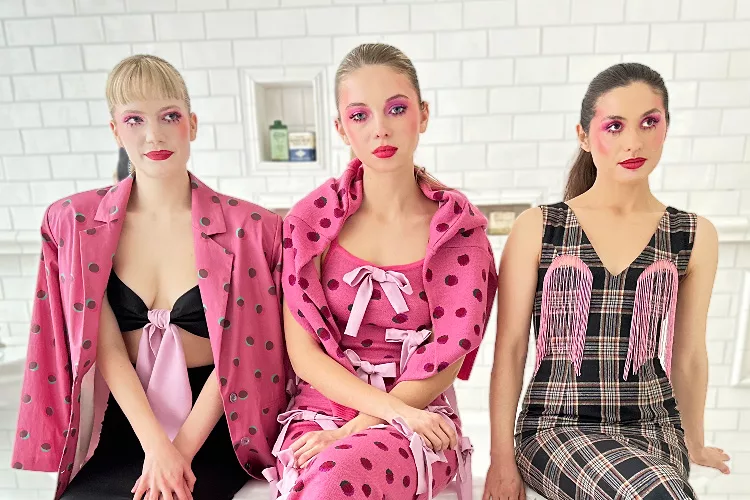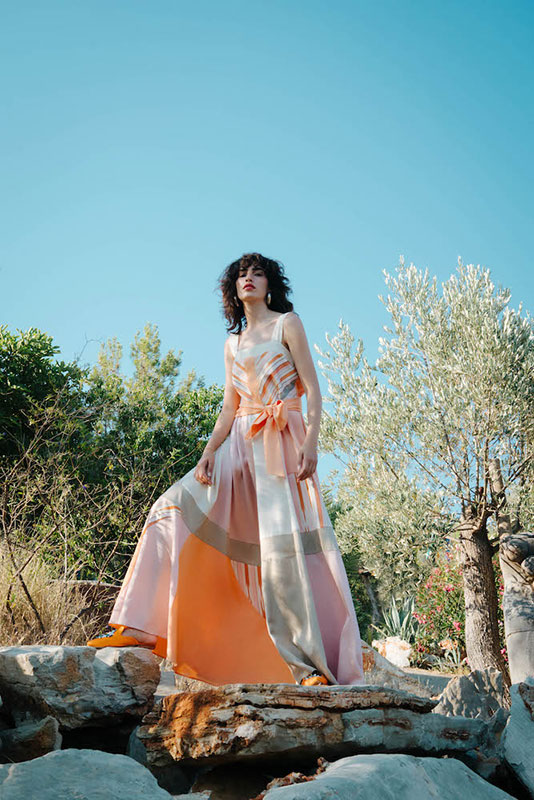
Reviving the precarious art of loom weaving needn’t be a throwback to “folksy” designs.
Modern, understated glamour can be the new luxurious expression of the old textile traditions.
When I was introduced to Kutnia, I was in for a delightful surprise. The fashion label is proudly Anatolian, and as such, the brand’s studio is headquartered not in cosmopolitan Istanbul, but in relatively laid-back Gaziantep, a much smaller city in Southeastern Turkey. I’ll admit that my unconscious bias went into overdrive. Gaziantep and fashion were not synonymous in my mind but if there is anything the last two years has confirmed, it is that the world is hyper-connected. Ideas and actions can go viral in seconds and if fashion creativity finds a home 2000 miles from Milan, then surely we should listen to that. Kutnia punches above its weight with Gazantiep’s cultural and historical richness behind the brand, making it a true inspiration.
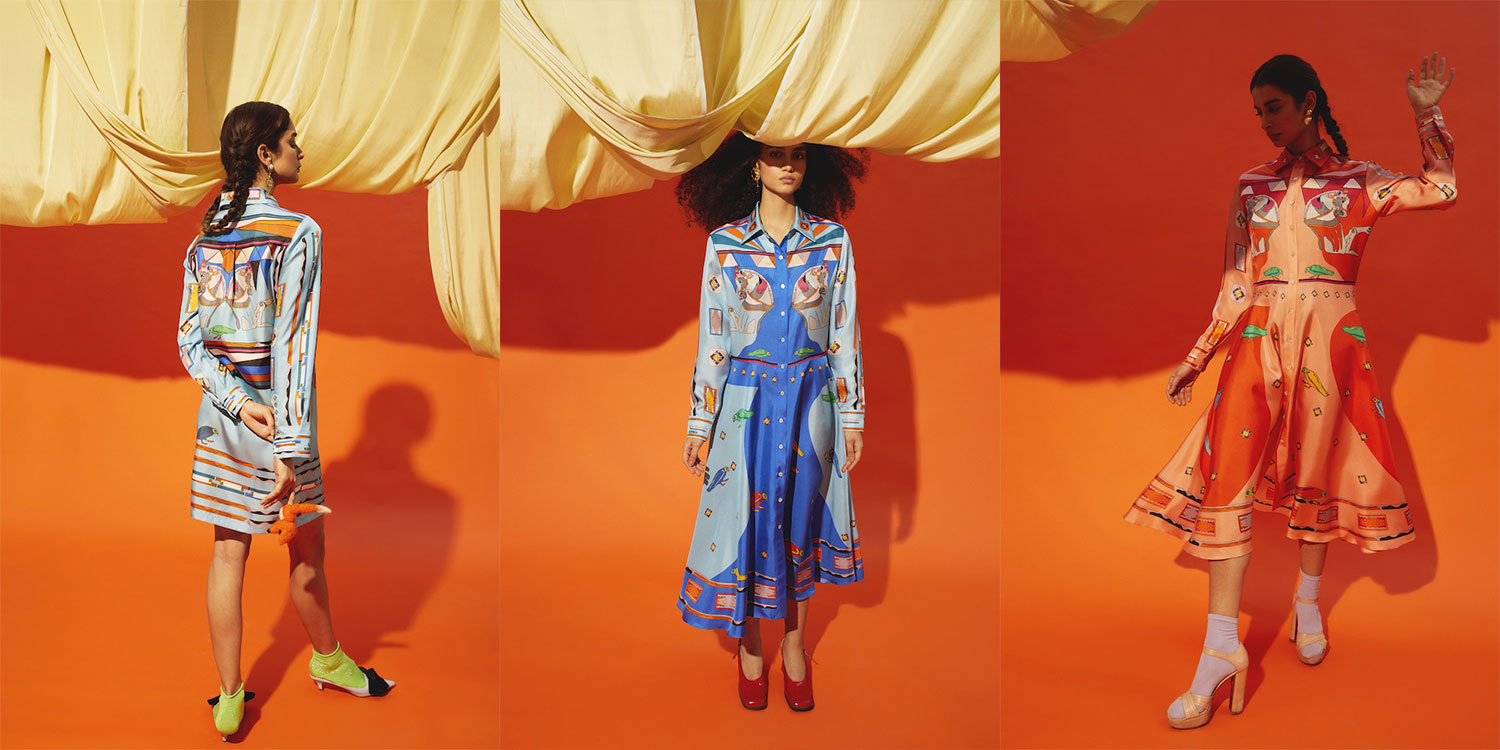
I was particularly enthralled by Kutnia’s ‘Zeugma Collection’ which uses bold, bright print motifs illustrated from the mosaics of the Zeugma by the artist Tuğberk Selçuk. His illustrations are adapted by designers Günseli Türkay and Selen Şahin. Each of them interprets and translates Selçuk’s illustrations into a colourful, energetic play on Gaziantep’s culture and history. They are dynamic and vibrant, and the elegant silhouettes make for simple, luxurious wear.
Kutnia’s S/S 22 Collection is a nod to the Turkish Mediterranean resort town of Bodrum. Kutnia’s design duo Türkay and Şahin take the entire collection to another level with flowing, floor-length maxi-dresses that give an air of understated glamour. The collection is punctuated with silk short sets that add a bit of spice to the otherwise longer hemlines. The palettes make me think of coastal sunrises and sunsets, gorgeous soft pink and blue hues that conjure up images of the Eastern Mediterranean. The soft pastels and voluminous drapes are tempered with a bit of a design edge through geometric lines and sharper tailoring in some of the dresses which keep the collection feeling contemporary and directional.
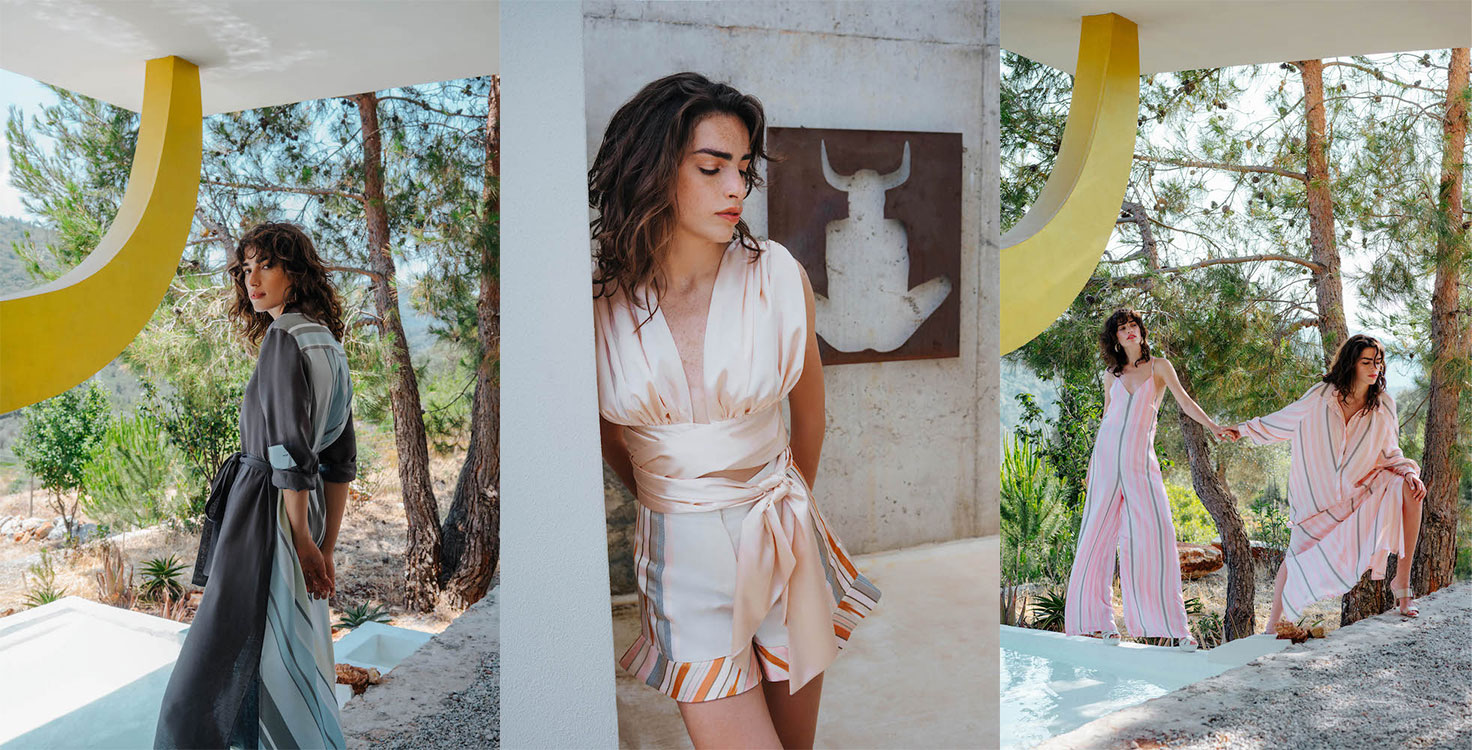
As a former Eastern Roman Empire, Gaziantep was always an important military and trading post on the centuries old Silk Route; the ancient tradition of silk-weaving is in its DNA. ‘Kutnu’ is the distinctly Anatolian woven textile made up of silk and cotton that is made only in Gaziantep. The artisanal tradition of working on handlooms began to fall out of fashion in the latter 20th century owing to a rise in modern textile manufacturing in the region.
In 2017, Kutnia’s founder Jülide Konukoğlu made it her mission to protect the weavers and their work from extinction and so the brand was born.
By promoting Kutnu’s distinctive appearance, the master weavers’ art lives on in contemporary design and has a place in the echelon of special cloth, like Scotland’s Harris Tweed or France’s Jacquard.
Because the weaving process is so highly skilled and intricate, it takes time. Kutnu is the very essence of slow fashion. For this reason, the brand does not overproduce, which is great for the planet, and it stays within two collections a year, courageously pushing away from the fast fashion cycle that has become so commonplace with so many brands. But this is not just a cultural preservation project. Kutnia is driving the modernization of traditional handwoven textiles to suit today’s fashion lover, keeping in step with the demands of fashion forward styling that we all want from a slow wardrobe.
–Christine Dawn DeLeon
Related Articles
Slow Fashion Spring Editorial
Setting the blueprint: Chloe is the first luxury house to earn the B Corp certification
Redress Design Award Winner Le Ngoc Ha Thu
Sofia Ilmonen wins the first ever Mercedes Benz Prize for Sustainability at the Hyeres Festival

